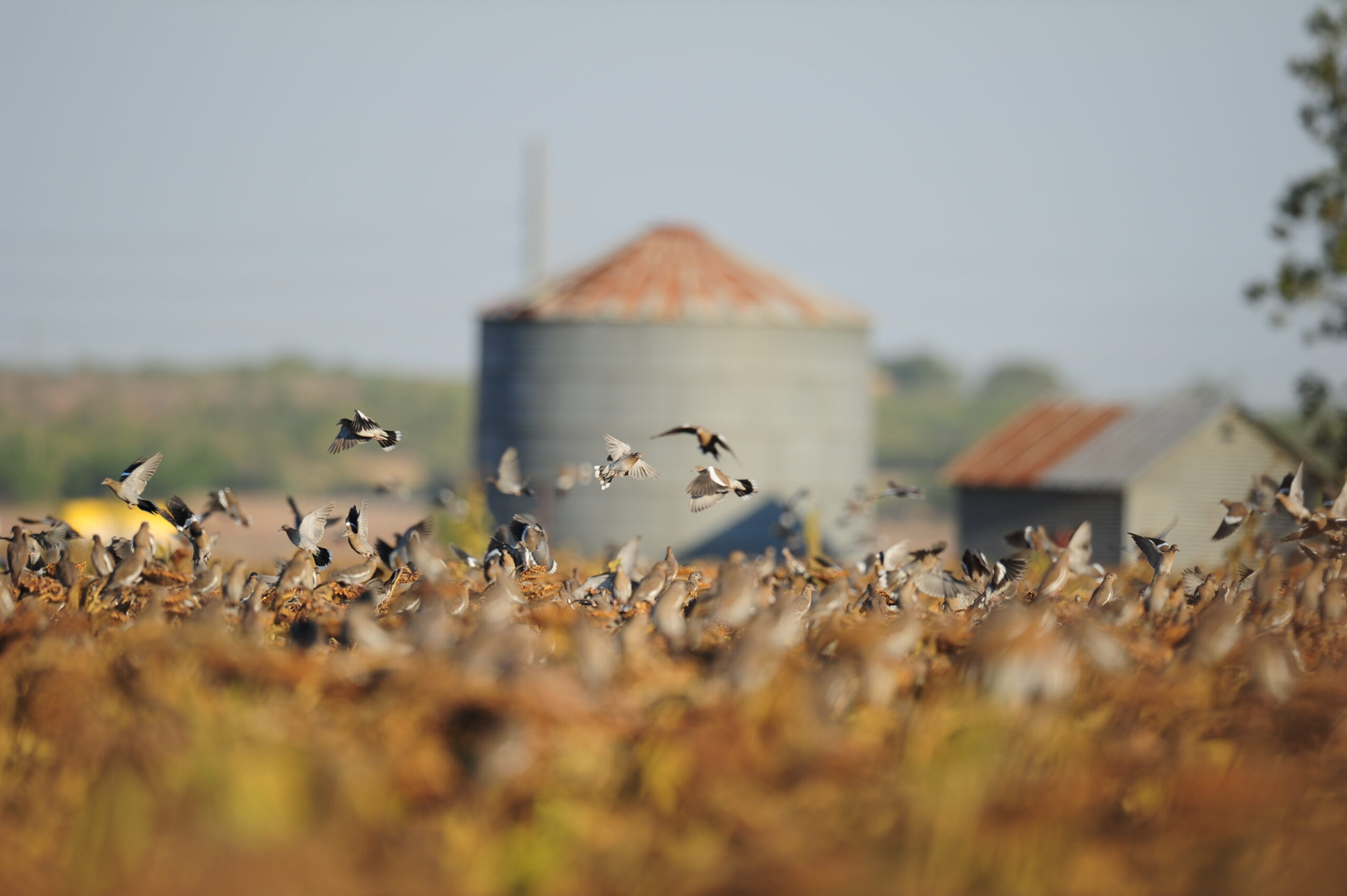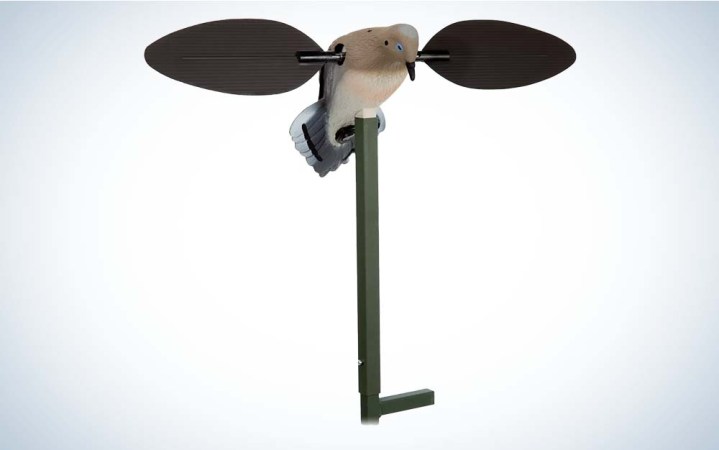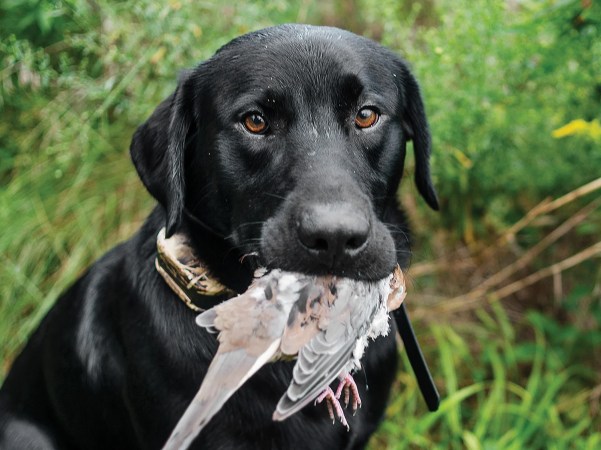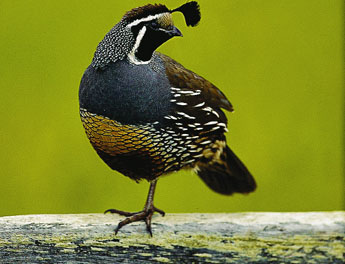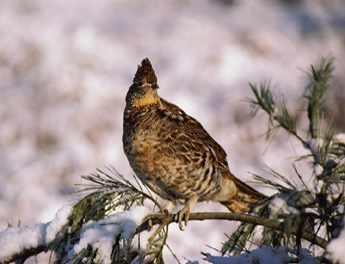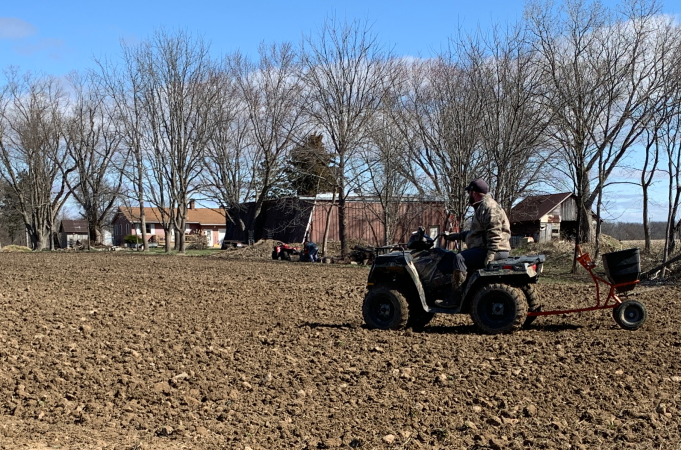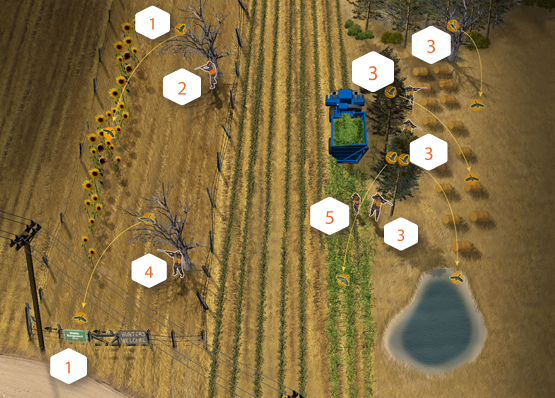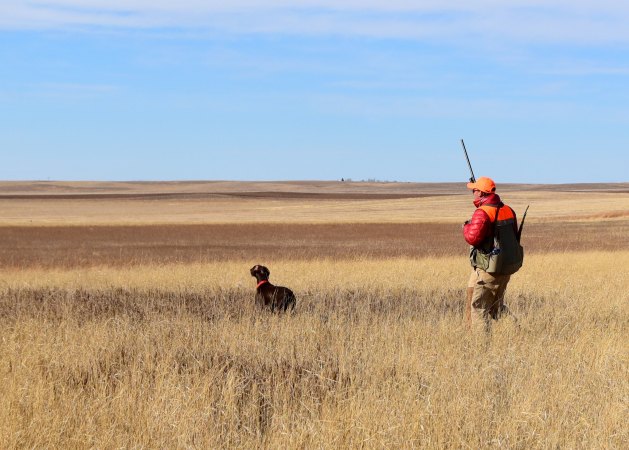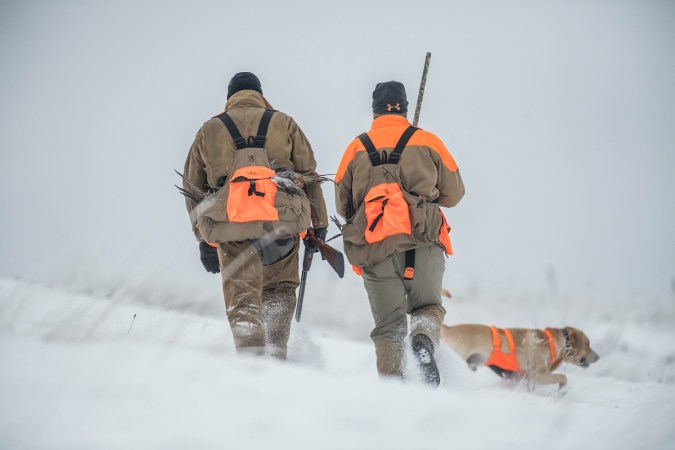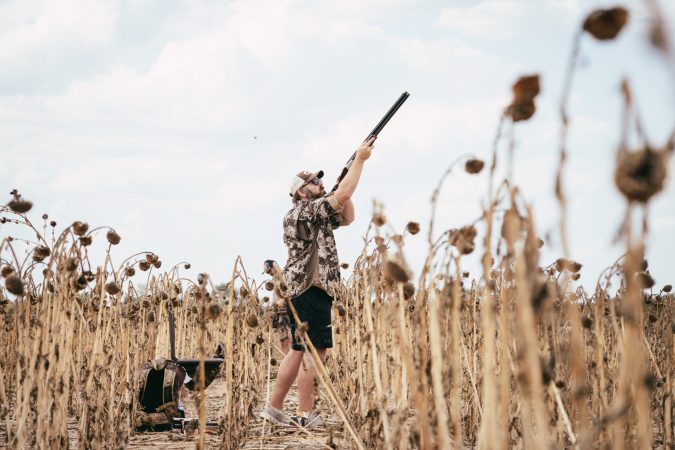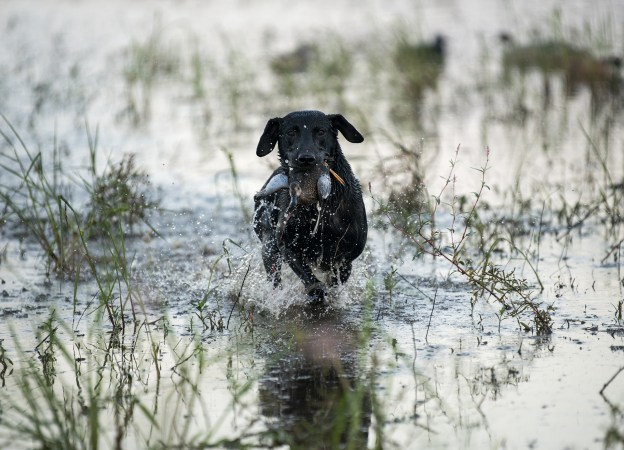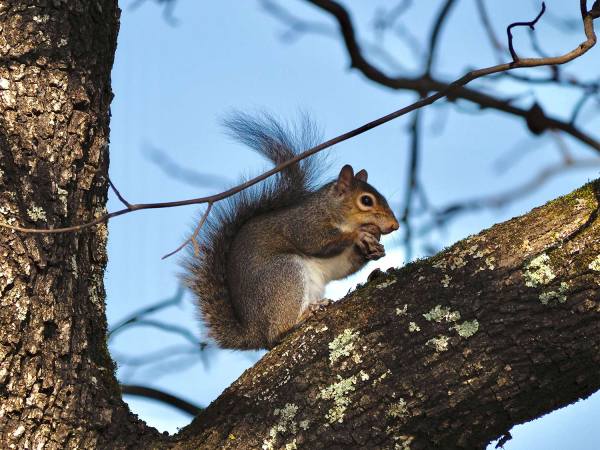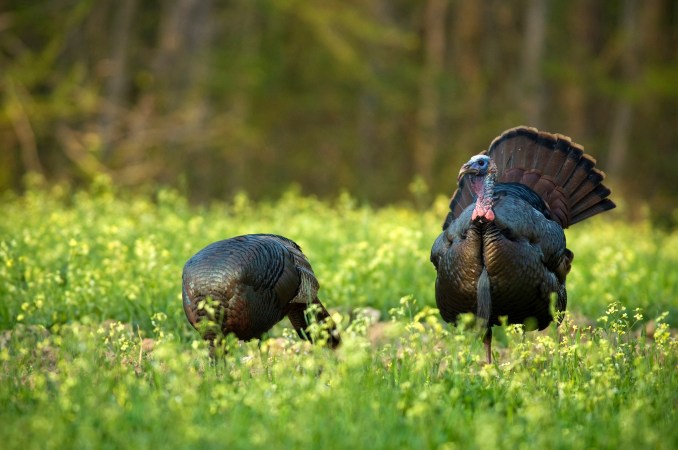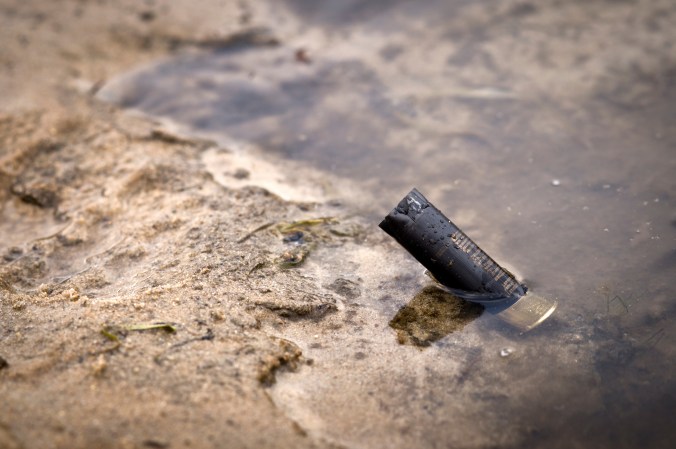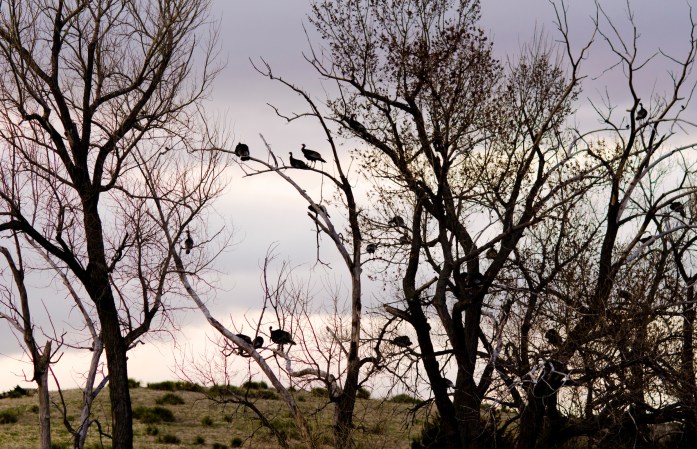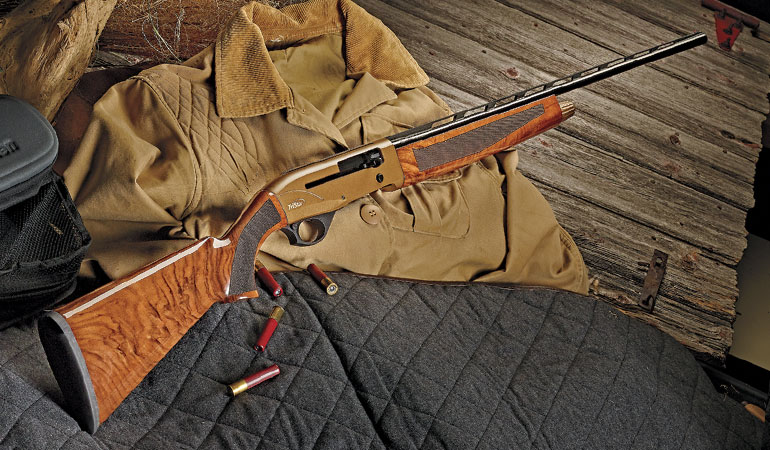Dove hunting is one of the most popular wingshooting sports in the U.S. Each season 1 million hunters spend 3 million days afield to shoot between 15 and 20 million mourning doves, according to U.S. Fish and Wildlife. And 40 of the lower 48 states have established dove hunting seasons. In Texas, where 250,000 people dove hunt, the opener might as well be a state-wide holiday. That’s because dove hunting is fun, relatively accessible, and doves make excellent table fare.
Finding access to dove hunting can range from easy to difficult depending on where you live. In states like Texas, the birds are abundant on many properties. If you don’t have your own property to hunt them on, there are public-land hunt to be had in the southern part of the state. You can also pay a day rate for as little as a $100 to go dove hunting in Texas. In other parts of the country birds and access can be sparse, but if you scout hard or have a few acres to plant a dove plot in the spring, there’s a good chance you can locate enough birds for a favorable shoot.
Finding doves and having access to them are the two main hurdles to clear, but there are a few more things to consider, like where to setup, which shotgun gauge to shoot, and managing hunting pressure. To have a prosperous dove season you need to take all of these variables into account and balance them equally. In our ultimate guide to dove hunting, we’ll cover the following. Read straight through, or click on a section to jump in.
- How to Find Doves
- How to Plant Your Own Dove Field
- How to Set Up on a Dove Hunt
- Dove Hunting Decoys
- Dove Shooting Tips
- Dove Hunting Shotguns, Chokes, and Loads
- Managing Dove Hunting Pressure
- Hunting the Late Season
1. How to Find Doves
Locating doves in late August is paramount. Plenty of hunters will simply show up to a sunflower patch on the dove opener and expect to shoot 15 birds. Get an edge on the competition by scouting several locations in the days leading up to Sept. 1. This is critical especially if you hunt public land, but it’s also worth finding private, fresh-cut agricultural fields. When you find birds on private land, knock on doors and ask for permission to hunt. Look for recently burned wheat fields and fields that have been disced.
Water sources, gravel roads (more on this later), and power lines are also good places to find birds. Doves must drink, they use grit to properly digest their food, and perch on the lines. If all three elements exist in one location, you’re likely to find good numbers of doves.
Once you locate the birds, don’t just call it good. Spend time studying their flight lines, that way you can get under the birds before the flight begins on opening day (you may have to arrive several hours before legal shooting time on public land to claim your spot). — J.G., M.P.
Natural Food Sources Are a Good Place to Locate Doves
Given the chance, doves will concentrate on natural foods such as foxtail, ragweed, wild sunflowers, and any native grass that carries a head of small seeds.
Monocultures—areas that are dominated by a single plant species—can provide doves with abundant food, but areas dominated by a single food source generally offer a boom-or-bust proposition for birds. When seeds are mature and available the birds will have plenty to eat, but when the crop is cleaned-up the birds will largely vacate the area. Wildlife biologists know this and generally plant dove fields with a variety of mixed seeding plants including browntop millet, barley, grain sorghum, and sunflowers. A good dove hunting tip is to pay special attention to areas where there are a variety of seeding plants in proximity to one another when you’re scouting. These areas will attract birds throughout the season.
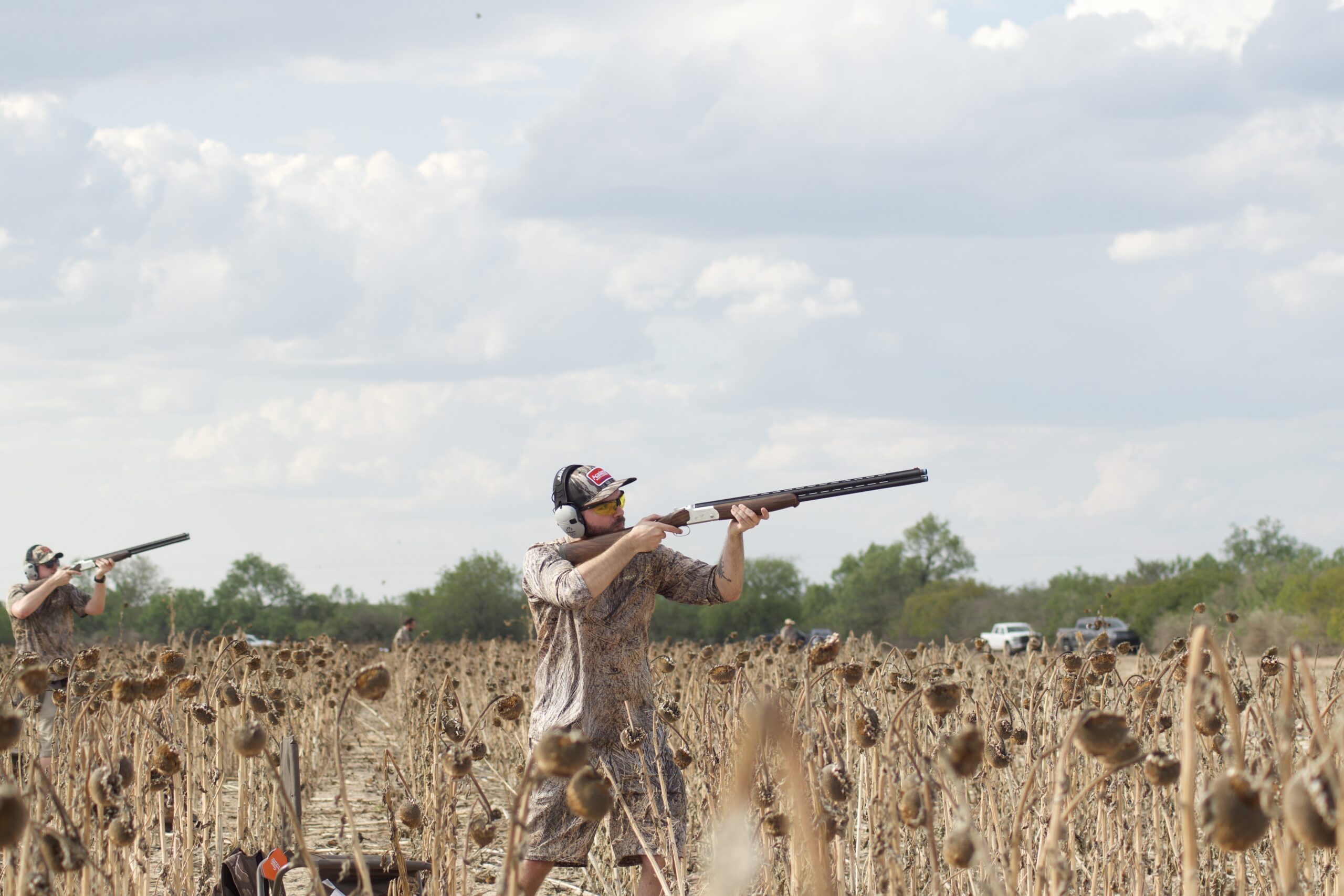
Most hunters recognize agricultural crop fields will attract birds. However, if you understand which native plants are most attractive to doves, you’ll be able to identify a potential hotspot that might be overlooked by others. Doves feed on a variety of native and non-native plants in the fall, and very few hunters can recognize all of them. Pay particular attention to stands of barnyard grass, ragweed, Johnson grass, lespedeza, poke weed (identifiable by its purple berries and stems), sedges, and wild peas. All these plants are very attractive to the birds—and largely ignored by other hunters. —B.F., M.P.
Water and Grit Are Key Factors to Dove Hunting
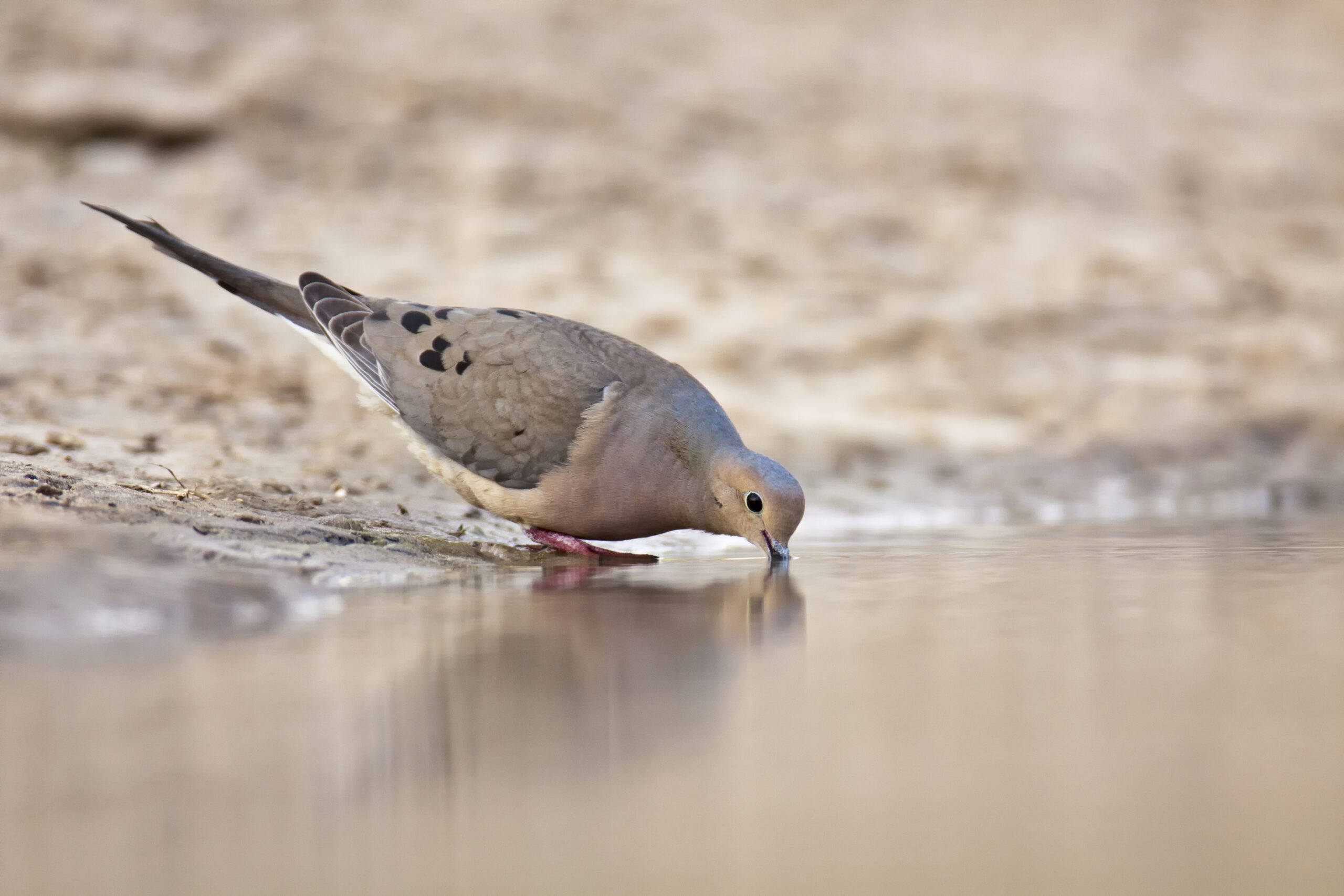
Water is critical for dove digestion, and the birds will not nest or roost far from a suitable water source. In dove terms, a “suitable” source of water is one that has little vegetation around the shore to obstruct the birds. It’s not uncommon to see doves watering multiple times a day, especially during periods of warm, dry weather. Doves tend to seek out water more often during the morning and evening hours, so hunting near an open water source late in the day is oftentimes a great way to shoot a limit. Ponds and rivers will attract doves if their banks aren’t too steep and there’s little vegetation, but seeps in pastures, small creeks, and even puddles are all favorite watering points for birds. Set up well away from the water’s edge and use natural terrain to conceal your location. Oftentimes doves access water from the same direction when they come for a drink, and once you identify the flight pattern you can set up accordingly.
Mourning doves have crops, which are essentially enlarged muscular pouches that extend from the bird’s esophagus. Crops store food while the birds are feeding (one reported dove crop held over 17,200 bluegrass seeds) and, in the case of doves and pigeons, create “crop milk” which is a rich source of nutrients for nestlings. To help digest the seeds in their crop, doves swallow small stones known as grit. Grit is often collected along the sides of gravel roads, so these areas attract birds and can offer a hot shoot. Just make sure if you set up in a fencerow near the road that it is legal to do so. Some states allow you to hunt the ditch on either side of the road, others strictly forbid it. —B.F.
2. How to Plant Your Own Dove Field
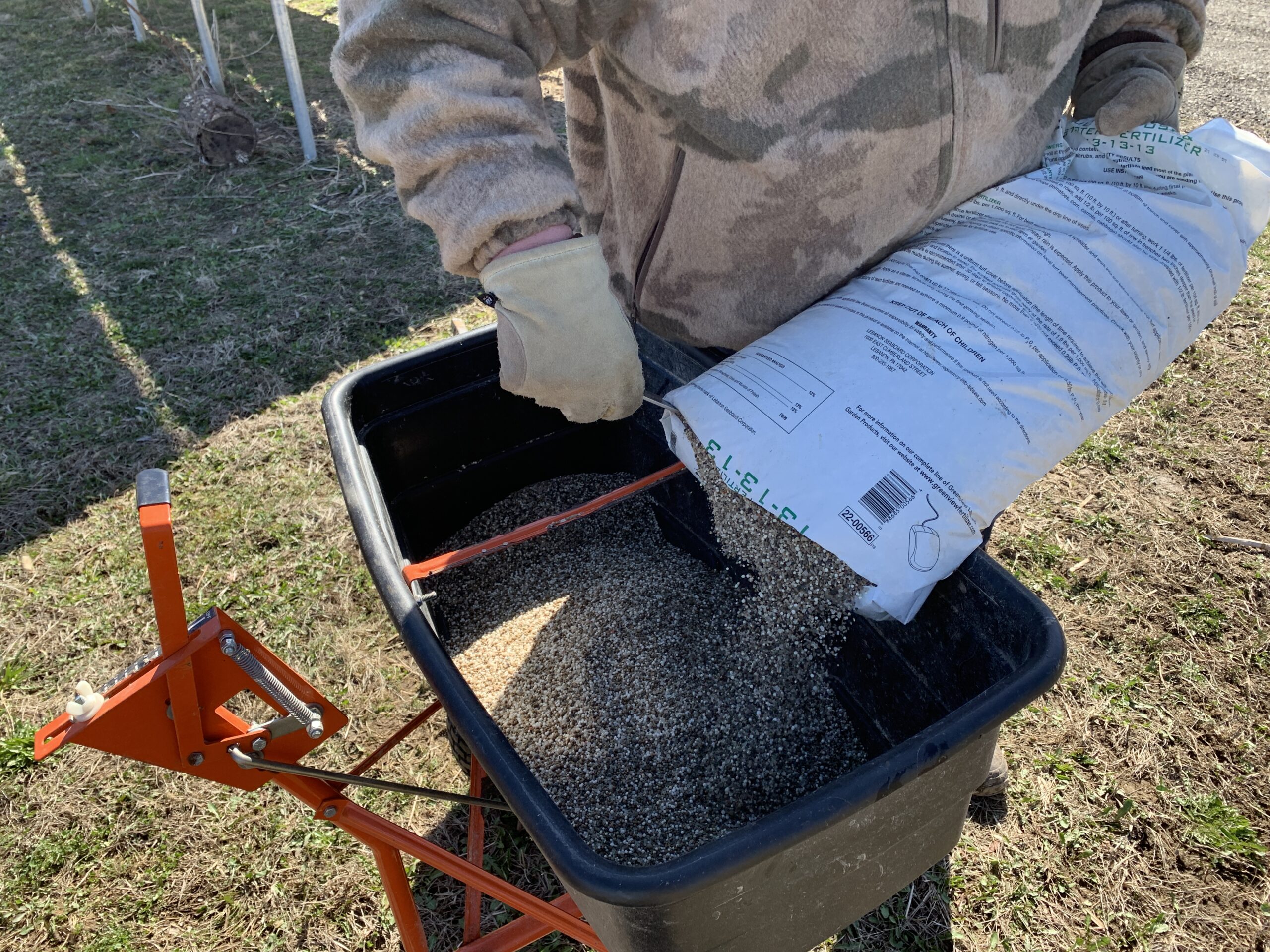
Sunflower and wheat are the two most common fields I see hunters shooting doves over, but you can also plant sorghum, millet, milo for dove hunting success. But for now, let’s focus on sunflowers and wheat.
The good news is that you don’t have to plant a very large field for good hunting. A quarter acre or less is often enough to draw doves.
The bad news is that planting can be tricky in the spring. This varies every spring due to weather (rain, snow, and cold), but if you’re planting a sunflower field ideally you don’t want to get sunflower seeds in the ground any later than the second week of May. Sunflowers have about a 100-day gestation period, so to get a good, full-grown head on the flowers (which means more seeds for the doves to feast on), you need to get them in by then. I try and plant in April (I live in Illinois), if possible, but in the Midwest you can get a freeze or even snow that time of year, so it’s important to keep an eye on the forecast. Folks in southern states can typically plant earlier without worrying about frost.
My recommendation is that when you have the chance to plant, do it. Don’t wait for a dry weekend. Take a day off work and get after it because the weather is volatile in spring. Our last few springs here have been especially wet, and I’ve learned the hard way you must plant at Mother Nature’s convenience or there won’t be a healthy crop come August.
Planting a wheat a field is much easier than sunflowers, because you can plant as soon as the ground is workable. Wheat seed is more like grass seed—it’s hardy and will grow whenever there is precipitation followed by a warmup and it won’t die off even if it gets buried under a foot of spring snow. If you want to spend less money (and time), broadcasting red spring wheat seed is the way to go.
Sunflowers take more time and money. To plant sunflowers, you will need to apply a chemical burn down on the field before the seeds germinate. This helps keep the field clear of weeds, which will stunt the growth of your sunflowers or choke them out altogether. Doves also like feeding in a clean field, not a weed patch, so you must use a burn down to have good hunts in September. You also might have to kill off your sunflowers in August to dry them out so the seeds will drop from the heads. That’s another added expense.
With spring wheat, all you need to do is get the field worked, spread the seed and some fertilizer, and cover it with dirt sometime in March or April. Then in August, you burn the field so all the seeds drop to the ground—doves love it. —J.G.
3. How to Setup for a Dove Hunt
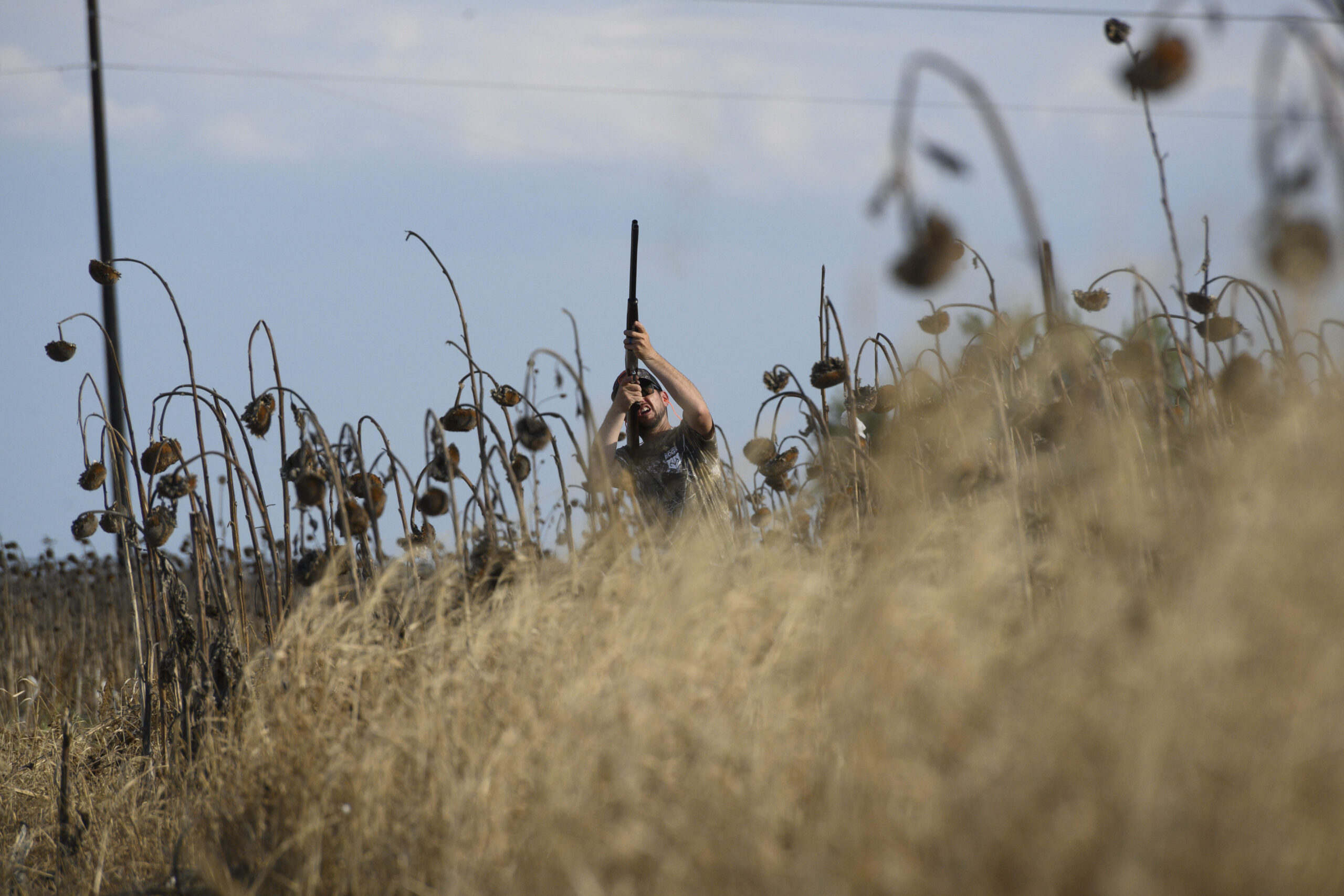
Find the Right Hide
Doves have incredibly good eyesight so they can find tiny seeds while flying at speeds up to 55 miles per hour. Doves are good at spotting movement and avoiding predation, but research has also shown that doves may be able to see color, and the birds may avoid any hues that look out-of-place in their environment. This means that hunters need to take extra steps to conceal their location and most importantly, remain still.
Using natural vegetation is the best way to conceal yourself, so tucking in behind a screen of ragweed or goldenrod will make for a more successful hunt (provided you aren’t allergic to either plant species). You can also find a shady spot along a treeline with the sun at your back or use camo netting affixed to stakes and place it in front of your shooting position. Doves aren’t as wary as a late-season mallard, but they will avoid your field if you don’t conceal yourself. —B.F.
4. Dove Hunting Decoys
Dove decoys will help distract the birds. Stationary decoys and spinning-wing dove decoys will put the doves at ease and bring them in close for a shot. Clipping stationary decoys to standing sunflowers, fence wires, and tree branches will help make your setup look more realistic. I’ve hunted many fields that had 15- to 20-foot wooden posts dug in the ground and a wire attached to either end to offer doves a comfortable landing spot before they feed. If you have a private dove field, I suggest taking the time to erect a wire in the middle of your field. It doesn’t have to be elaborate. Any kind of long wooden or metal posts with sturdy enough wire or rope will suffice.
Motion decoys work well the first few shoots of the season but eventually, doves will become wise to them. As the season rolls along, watch how doves react to the spinners. I always start off the hunt by using a spinner or two, but if doves shy away from them, I either turn them off or pull the decoys completely. —J.G.
5. Tips for Shooting Doves
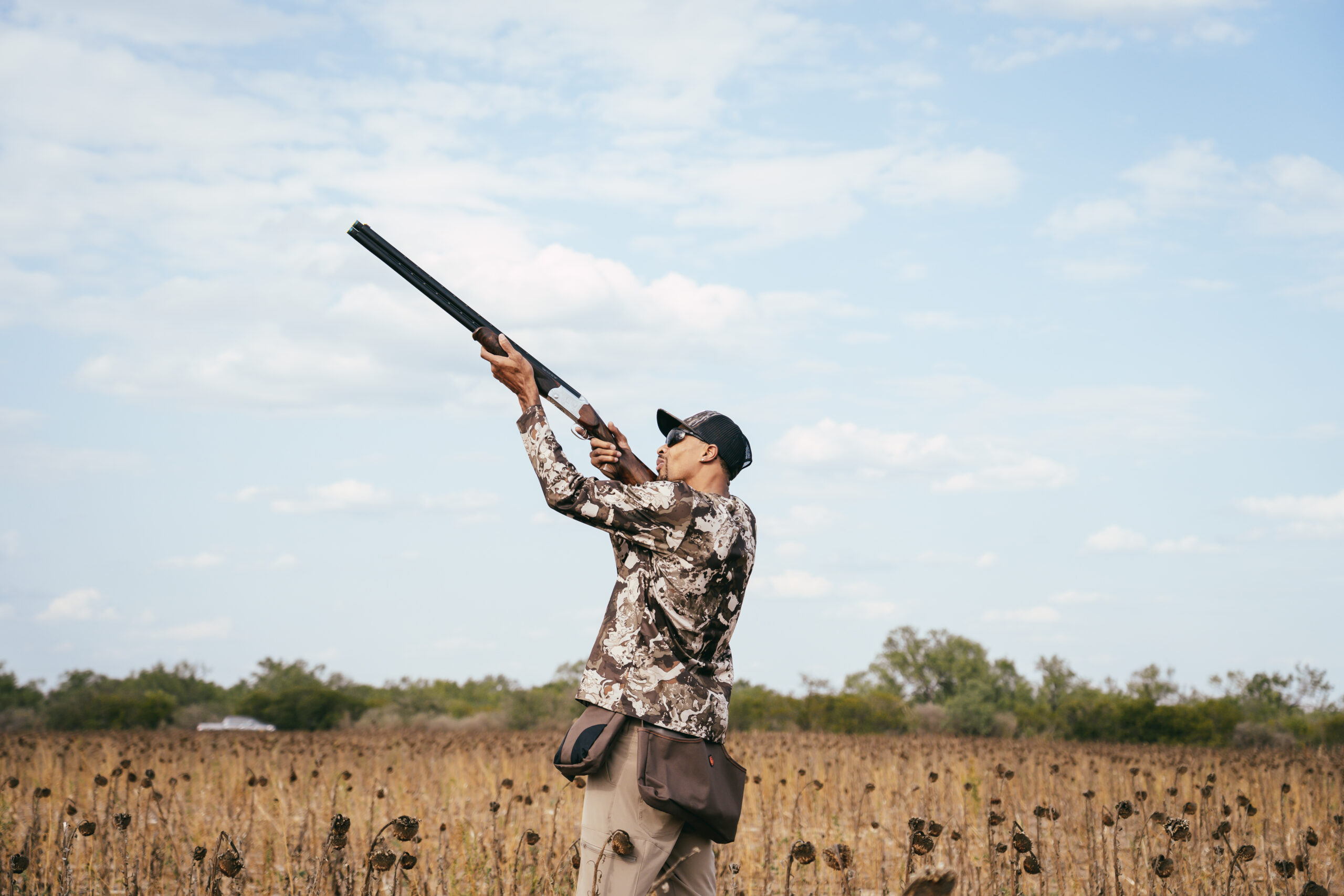
Mourning doves are among the fastest and most acrobatic birds we hunt. They are agile enough to make even the most seasoned wingshooter curse their way through opening day. These birds dive, twist, change speed, change direction, and rise and drop so quickly and effortlessly that it sometimes seems impossible to intercept passing targets with any regularity. However, if you learn and practice the fundamentals of wingshooting, you’ll shoot more doves with fewer shells.
Keep your muzzle moving. The muzzle of your shotgun must be in motion before, during, and after the shot. One shotgun instructor that I trained with described it as stroking a paintbrush across the target rather than shooting the bird. This is the most fundamental principle for killing more doves, because if you stop the gun, you’ll shoot behind the bird every time.
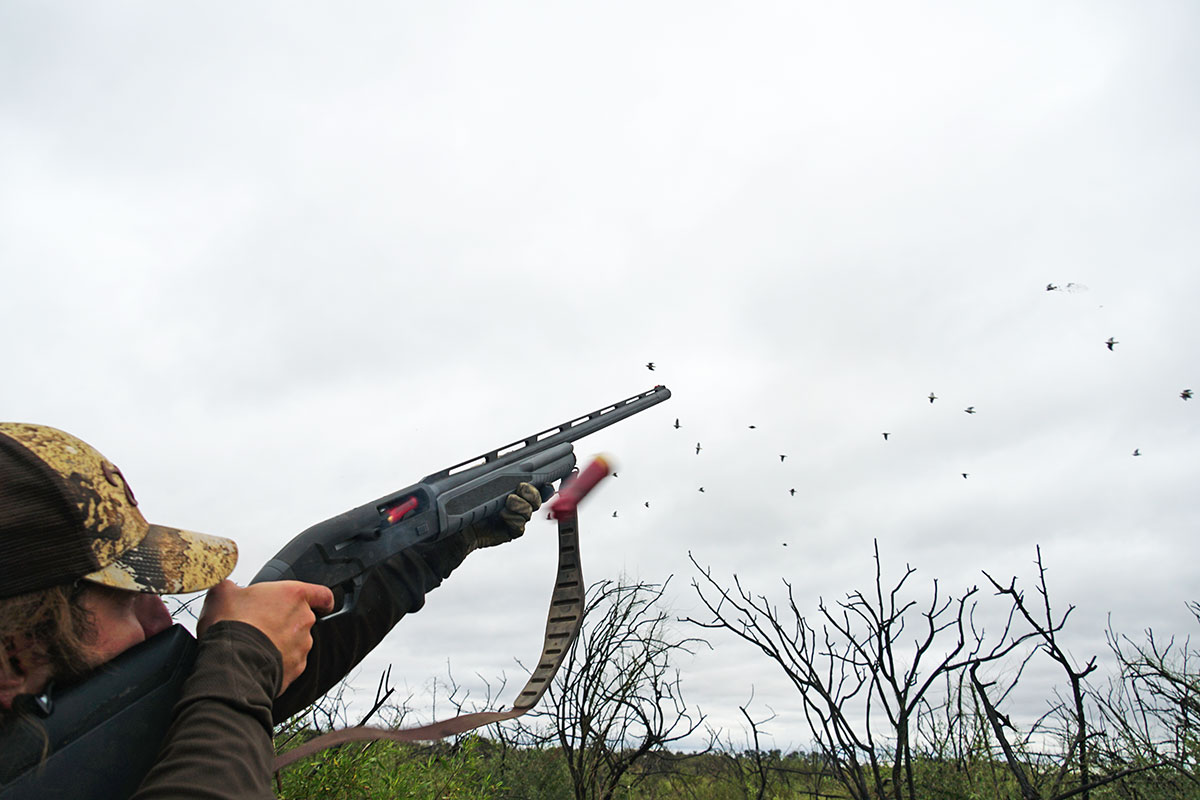
Establish a solid cheek weld. Do this by bringing the gun to your shoulder and cheek as opposed to lowering your head to the gun. Practice mounting and swinging your (unloaded) gun prior to the season opener.
Your upper body and gun should remain fixed. Lateral muzzle movement is accomplished by rotating your hips left or right, and muzzle elevation should be controlled by flexing or extension of the back. When standing, keep your weight noticeably forward but not so much that lateral movement is impeded. If you typically shoot while seated, then take the time to practice standing up from a seated position and moving the gun. The neighbors may wonder what you’re up to, but you won’t get skunked on opening day.
Don’t worry about the bead on your shotgun. Your eyes need to be fixed on your target, and your gun should be moving with your body as you track the bird (this is why proper posture is so important). When you aren’t actively on target, practice “soft eyes” by relaxing your focus to scan a wide portion of open sky. You’ll pick up birds more quickly and will have more time to get on target as they approach.
Perfect your trigger pull. A bad trigger pull is often the result of choking the trigger with your shooting finger, flinching, or pulling the trigger at an angle—can move the muzzle enough to cause a miss. To remedy this, place a snap cap (they cost about $20 and quickly pay off) in the chamber of your gun and trace along the top seam of a wall, pulling the trigger as you do so. Pay close attention to the degree the bead deviates from the seam when you pull the trigger; ideally, the muzzle will keep moving on the exact same line as the trigger breaks.
Practice! You’ve heard it before, but here’s how to make your shotgun practice dove-hunt-specific: For the price of a few trips to a high-end sporting clays range, you can purchase an electronic target thrower and position it on your range or property so that all the targets are angled shots or crossers, the primary presentation for most shots on doves. Having an electronic target thrower will help you keep up with practice year-round—and they’re also a lot of fun. —B.F.
6. Dove Hunting Shotguns, Chokes, and Loads
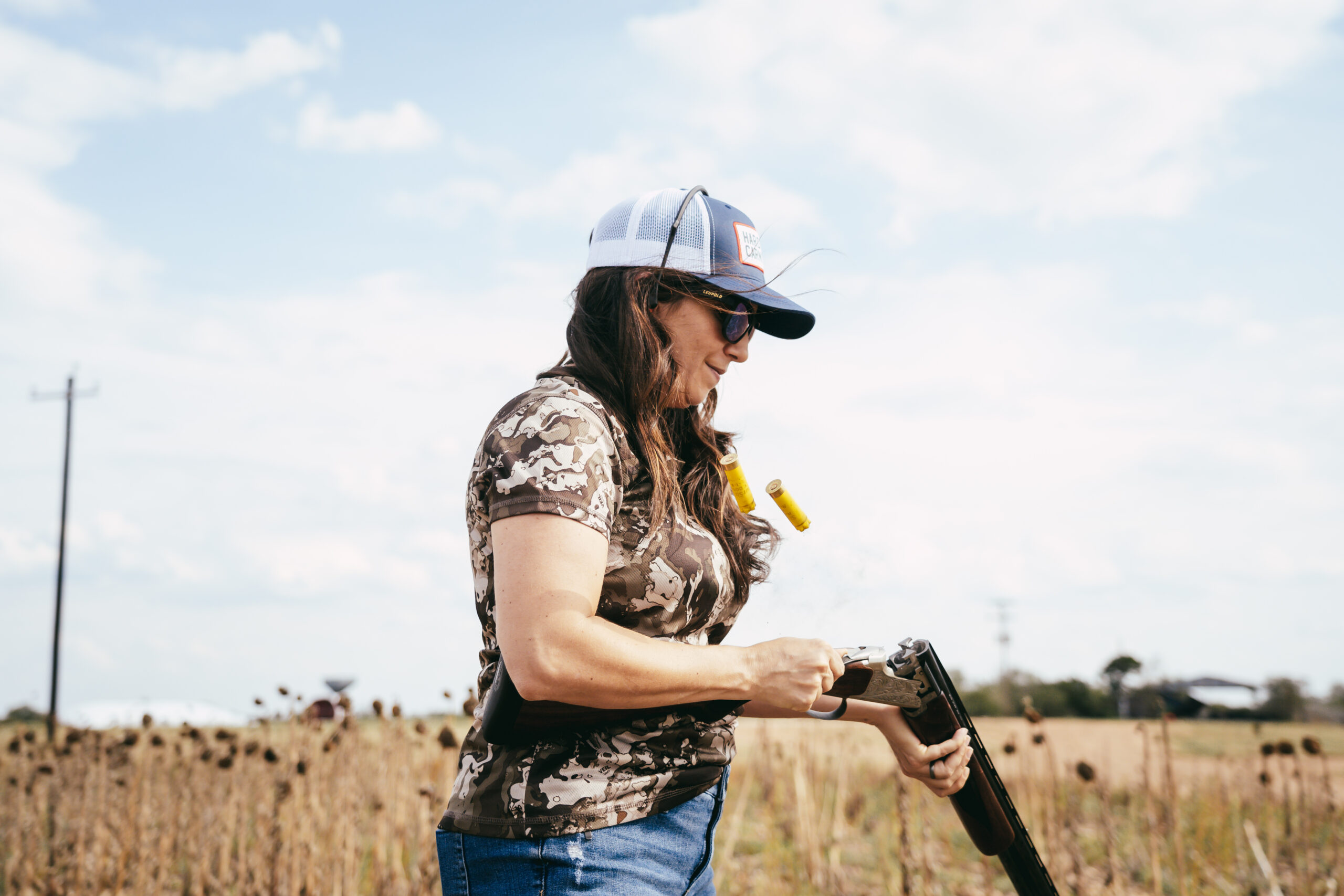
Shotgun Gauges for Dove Hunting
The gauge of shotgun you pick for dove hunting isn’t as important as making sure you shoot the gun you are most comfortable and accurate with. Opening day of dove season is no time to try out a new smoothbore you haven’t shot a single round of skeet with. Doves are some of the toughest birds to hit, so you want to use a shotgun you are confident with.
Doves are difficult bulls to hit, but not tough birds to drop. In fact, some hunters will say a 12-gauge is too much gun for doves, but a 2¾-inch 1- or 1 1/8-ounce load of lead No. 7s, 8s, or 9s is fine. Sub-gauge guns like 20-gauges and 28-gauges are also great choices for doves. But whichever gauge you choose, be sure to pair it with the proper payload and shot size. —Joe Genzel
Best Load for Dove Hunting
A 2¾-inch lead shotshell with shot sizes from No. 7s to 9s will get the job done on doves, regardless of gauge (a .410 shell is going to be 2 1/2 or 3 inches). For steel loads, you can move up to a No. 6 shot size if you want (a few manufacturers make 2¾- and 3-inch loads in this variant for teal season). Personally, I wouldn’t spend the extra cash on a bismuth load for doves. Same goes for tungsten. TSS is overkill on a dove. Where non-toxic shot is required No. 6 steel will do just fine. —Joe Genzel
Best Choke for Dove Hunting
I typically shoot an auto-loader with a skeet, improved cylinder, or improved modified choke depending on where I am hunting. If you shoot a double-barrel shotgun, that will give you the option of using two choke constrictions, which will allow you to pair your choke to the shot presentation. Small fields lend to offer closer shots; big fields, longer ones, so take that into consideration before the hunt and swap chokes accordingly.
However, every shotgun patterns differently, and no two shooters swing a shotgun the same. You must decide what works best for your style of shooting. The only way to do that is by patterning your gun on paper and shooting clay targets. Shooting skeet and five-stand are the best ways to replicate the shots you will take on doves. It’s worth spending time at the range with the gun, load, and choke you intend to hunt with. —J.G.
7. Manage Dove Hunting Pressure
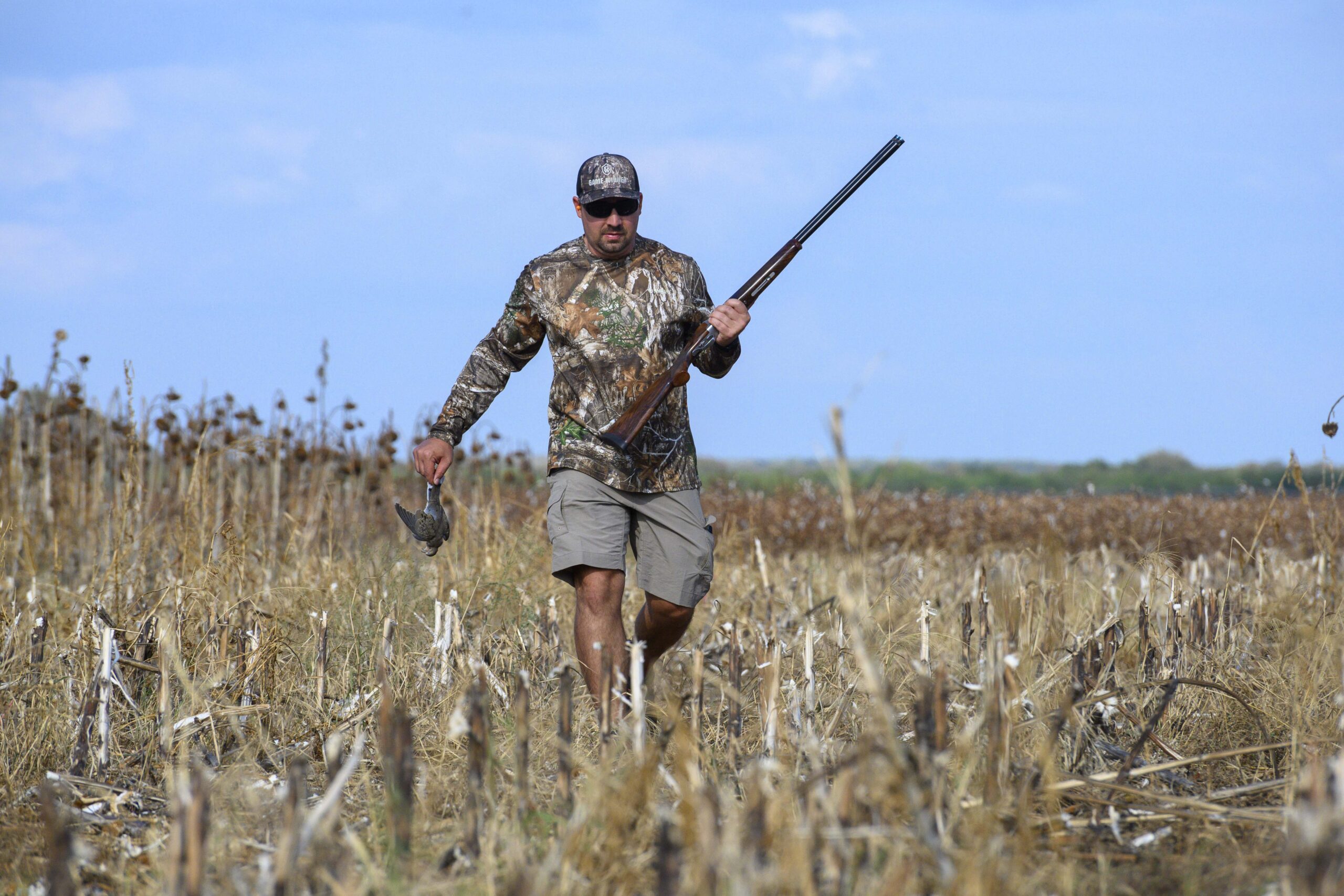
Doves are not particularly sensitive to hunting pressure, but you can ruin a hunting area by taking limits from it day after day. By the end of the first week of dove season, most popular public fields will be shot-out and the remaining doves in the area will have decided to look for food elsewhere. But, don’t quit on public fields later in the season because most hunters will have moved on, and the birds might return. Or fresh doves may migrate in and utilize the fields.
If you only have one field to hunt, then do so sparingly—allow a full day of rest before hunting again for optimal success (two or three days is even better). If you have multiple fields to hunt, then rotate between them so you don’t burn your best one. Sure, you might have bagged a limit on successive days in your honey hole, but it’s better to let the area settle before another shoot. Don’t exclusively hunt feeding areas either. Divide your time between feeding locations, grit sites, and water sources.
You can also extend dove season by limiting the amount of time you hunt. If you shoot 10 birds in an hour, get out of the field, and let the dove’s feed. That way they feel more comfortable and are apt to return. It’s the same philosophy some duck hunters use for late-season mallard hunts by shooting birds that are coming in to roost early—from 1 to 3 p.m.—and then pulling stakes to let the bulk of the birds return without hearing a gun shot. —B.F., J.G.
8. Dove Hunting the Late Season
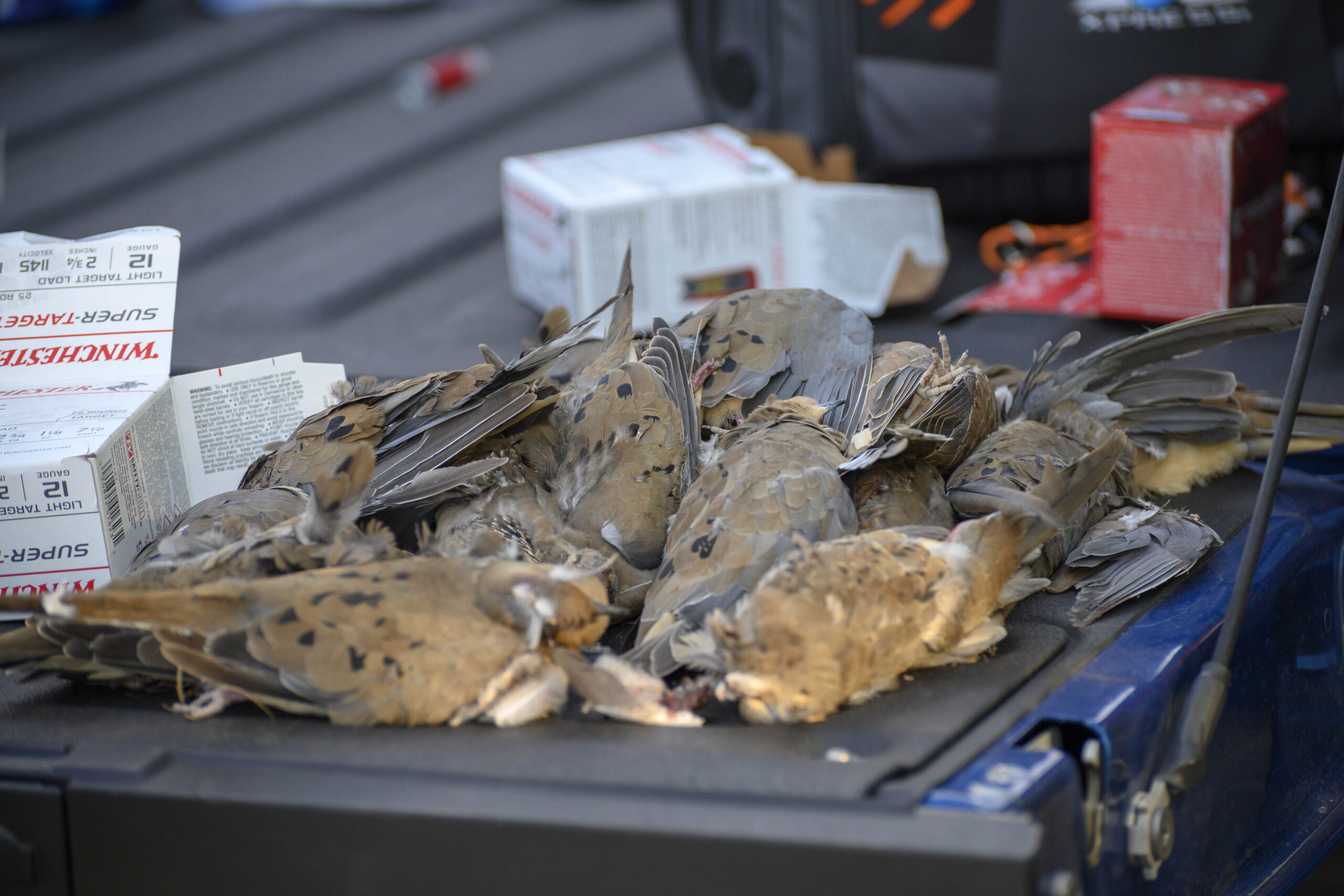
At some point during the season, a cold front will come through and most dove hunters will move on to other game birds.
But don’t overlook dove hunting the late season. Somewhere to the north of you, hundreds of hunters are probably experiencing the same thing. That means the birds they’ve lost are likely headed your way.
Finding yourself in the middle of a good dove migration can mean seeing hundreds, if not thousands, of birds. I’ve had hunts with morning limits pretty much filled before the first rays of sunlight covered the cornfield we were hunting.
One mid-September afternoon, four of us surrounded a small water hole on the Kansas prairie and watched as a massive cold front with heavy rain came in from the northwest. For two hours there was never a time when there weren’t southbound doves in sight. Limits of 15 came so fast. The last five minutes of legal shooting light, guns already cased, I counted more than 100 doves that passed within shotgun range.
But migrating doves aren’t prone to hanging around long, so don’t waste time. If your mid- or late-season scouting turns up a flock covering a field of freshly cut corn on Sunday night, you’d better call in sick on Monday morning. —M.P.
Dove Hunting Q&A: Your Dove Questions, Answered
Why is dove hunting so good in Argentina?
Doves thrive in Argentina because the country is full of perfect habitat for them. The brush country of Argentina provides ideal nesting cover. The expansive grain fields provide plenty of feed. The mild winters make it easy for doves to survive.
How many doves are there in the U.S.?
There were approximately 194 million doves in the U.S. as of 1 September 2020, according to the USFWS.
What is the best food plot for dove?
Sunflowers and wheat are the two most common fields that dove hunters plant, but you can also plant sorghum, millet, and milo for dove hunting success. A lot of hunters favor sunflower plots because they are easy to grow.
